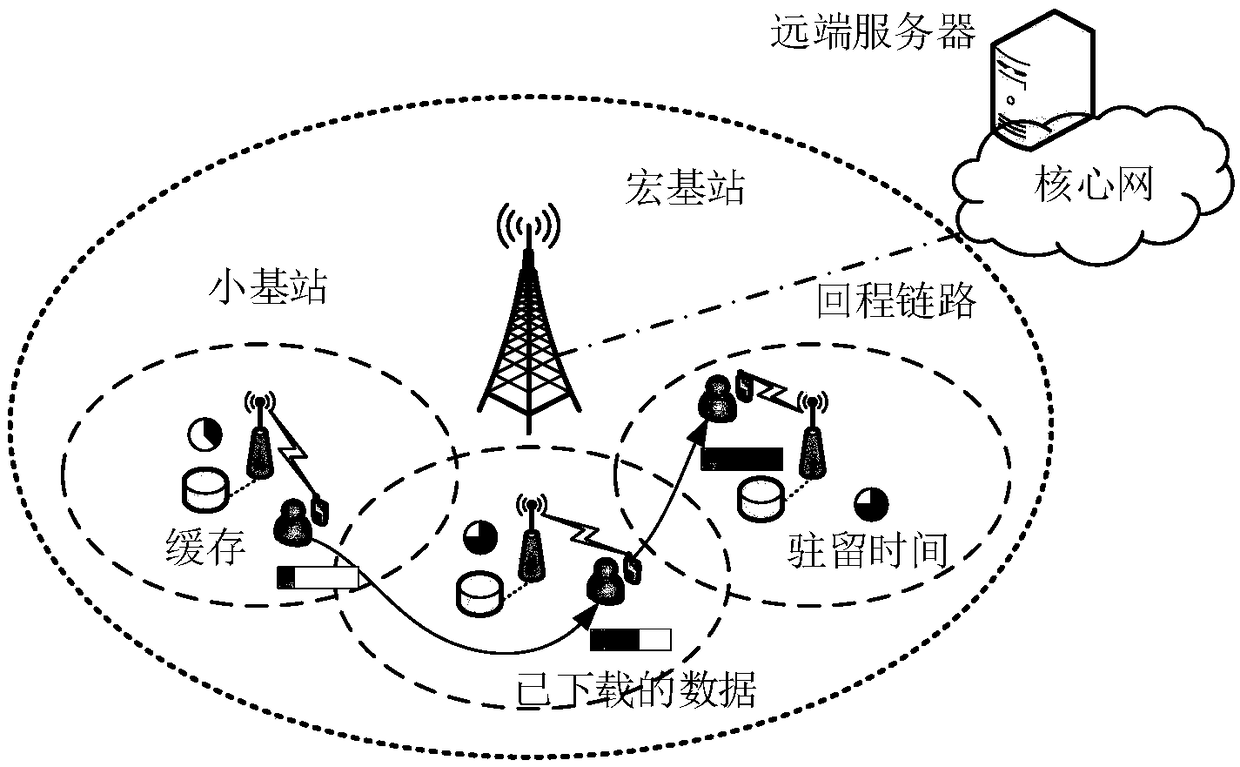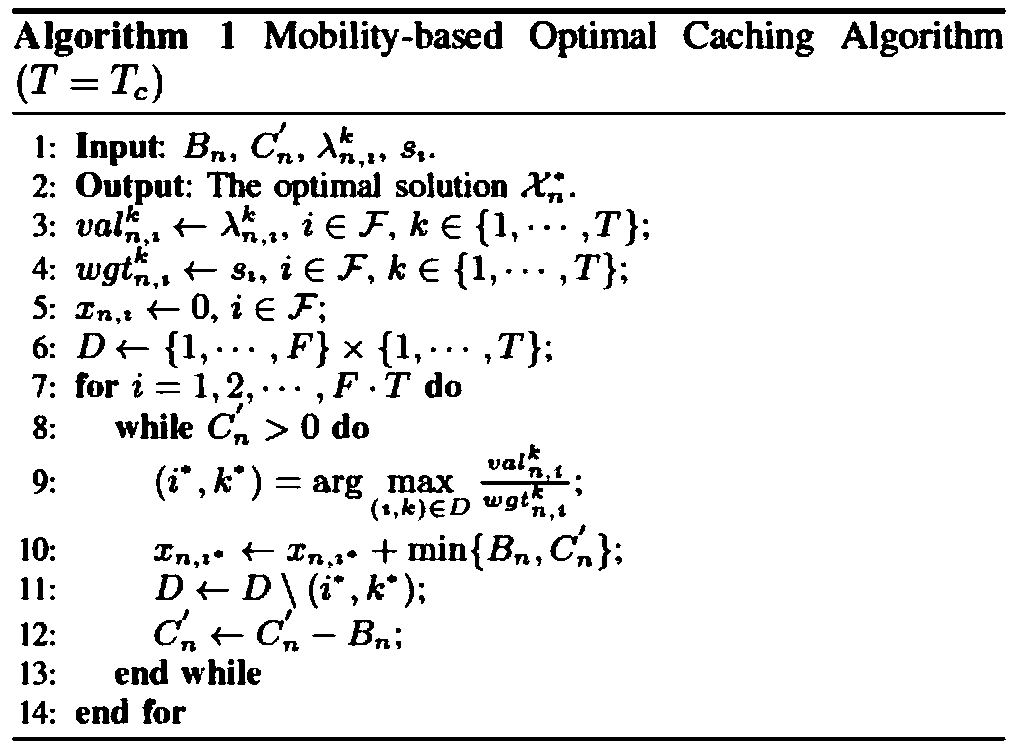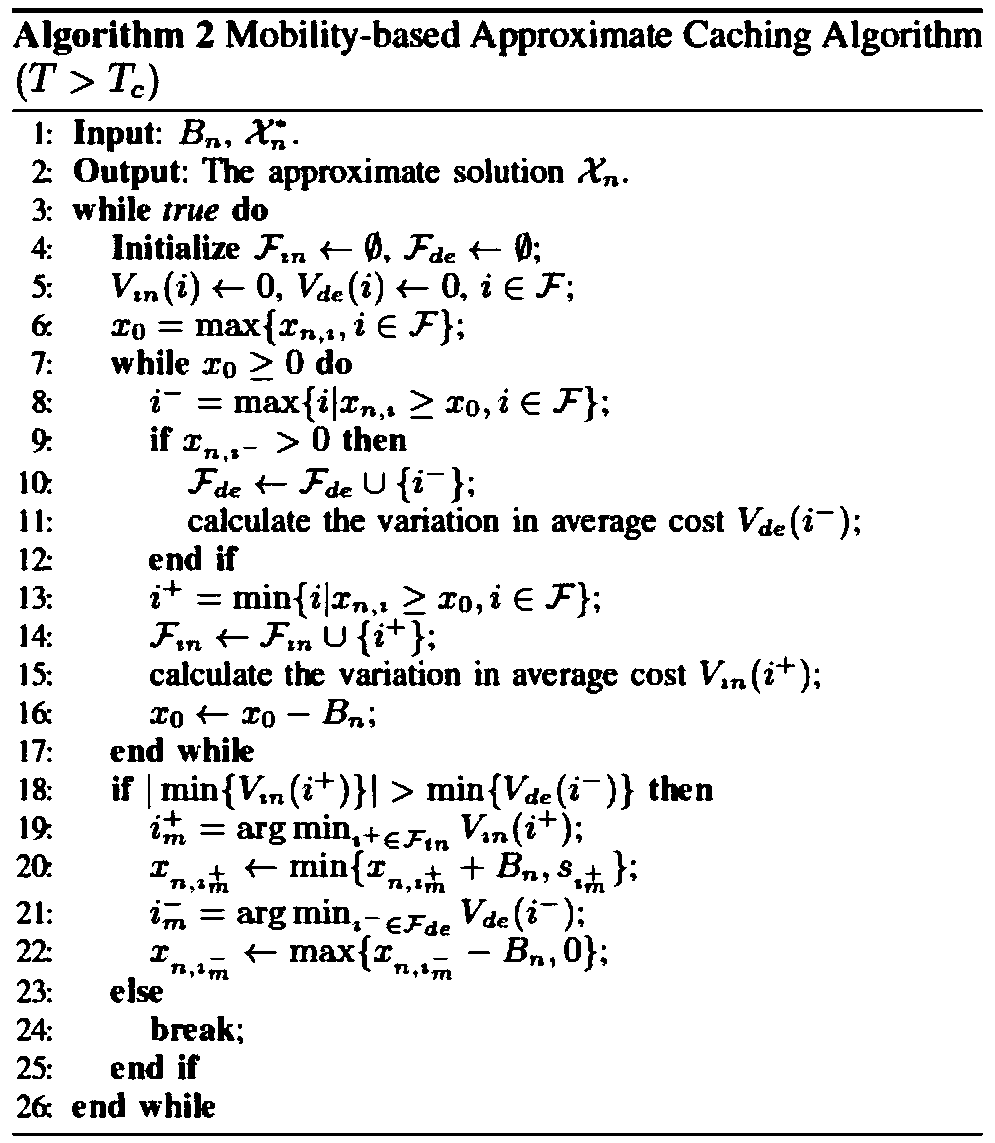Video service classification buffer method based on user mobility in ultra-dense heterogeneous network
A heterogeneous network, network video technology, applied in the field of wireless communication, can solve the problem of not considering the impact of video services, validity period analysis, etc., to reduce traffic and reduce transmission costs.
- Summary
- Abstract
- Description
- Claims
- Application Information
AI Technical Summary
Problems solved by technology
Method used
Image
Examples
Embodiment Construction
[0031] In order to facilitate those of ordinary skill in the art to understand and implement the present invention, the present invention will be further described in detail below with reference to the accompanying drawings and embodiments.
[0032] The present invention proposes two different caching strategies for different types of video services. For ordinary network video applications, encoding caching and delayed offloading strategies are adopted, and the caching problem is described as an optimization problem to minimize the average transmission cost of cached content. For typical streaming media applications, unencoded video clips are stored in the buffer of the small base station. The corresponding buffering scheme is to pre-place the data blocks of the requested video in the set of small base stations that users pass by with a higher probability. The block is the video segment most likely to be downloaded by the user in each cell. The purpose is to maximize the amount o...
PUM
 Login to View More
Login to View More Abstract
Description
Claims
Application Information
 Login to View More
Login to View More - R&D
- Intellectual Property
- Life Sciences
- Materials
- Tech Scout
- Unparalleled Data Quality
- Higher Quality Content
- 60% Fewer Hallucinations
Browse by: Latest US Patents, China's latest patents, Technical Efficacy Thesaurus, Application Domain, Technology Topic, Popular Technical Reports.
© 2025 PatSnap. All rights reserved.Legal|Privacy policy|Modern Slavery Act Transparency Statement|Sitemap|About US| Contact US: help@patsnap.com



